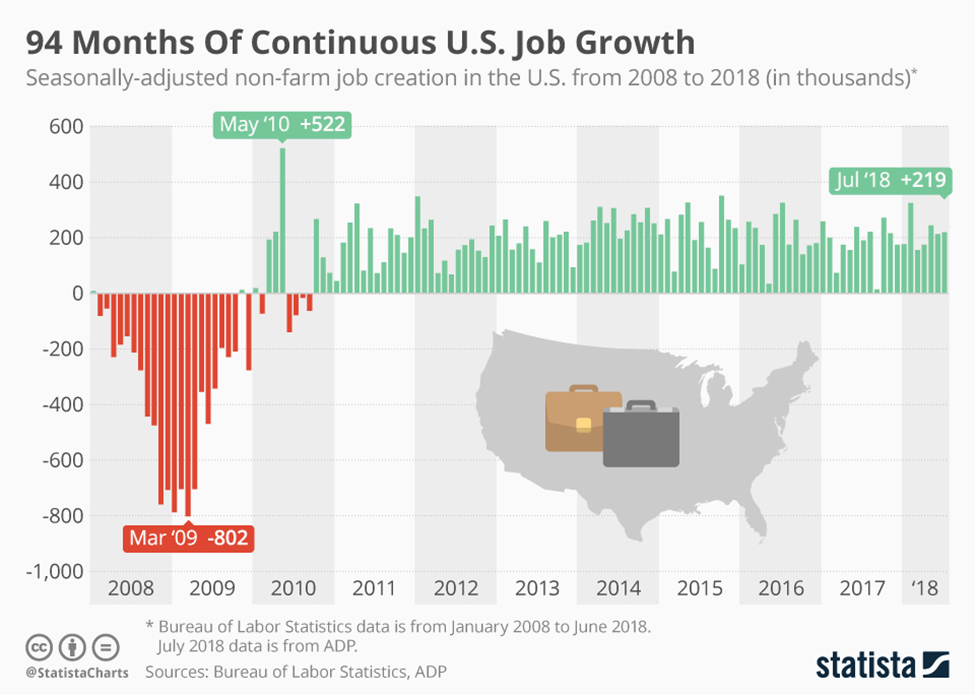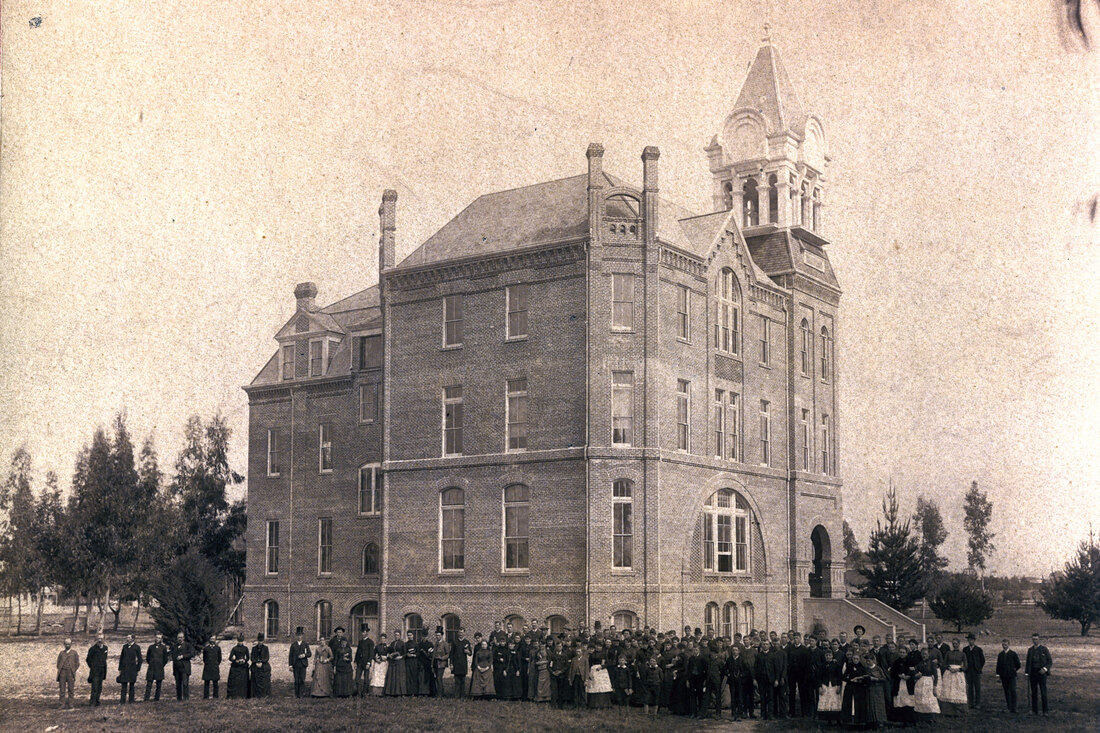How to Solve Your #1 Business Challenge1/10/2023 One of the biggest business challenges I run across today impacting both large and small companies alike is bandwidth issues – too much work, not enough ‘resources’ to get the job done. A lack of resources in any business is a problem, indeed. Whether those resources are people, materials or relationships (supply chain), having the right number of resources to handle your needs while also being able to get a head requires both strategic forethought and action. It can be a daunting task to get beyond the fire fighting stages to then be able to actually start focusing on longer term strategic plans. For this reason its smart to get help. Despite the back and forth about the health and standing of our present economy, employment remains strong as the US unemployment rate as of December 2022 was at 3.5% according to the Bureau of Labor Statistics. For professionals in a technical setting the unemployment rate is estimated to be closer to 1.7%. This means if you need technical help most of the good resources are already in use elsewhere. When resources are constrained, yet work is plenty, this is where the consulting industry comes conveniently into play. The consulting industry has grown since 2011 by close to 5% YOY on the coattails of increasing supply and demand. With a multitude of options now available to companies looking for help one of the biggest challenges afflicting buyers seeking additional resources to solve their bandwidth issues is how they will find the right support while ensuring the money they’re paying for it results in a positive outcome. A Lesson in History Consulting isn’t new by any means, we’ve just reframed it to fit our present marketplace. Henry Ford, the USA automotive tycoon, used consultants prior to the 20th century to help build out his automotive empire ultimately creating what we know today as the Ford Motor Company. Consultants like Oliver E. Barthel are credited as key contributors to Fords success by developing combustible engines for commercial use which could be scaled for production. Needless to say consultants like Barthel and their associated contributions are immeasurable to the success of their industries. As with all things, time has a habit of bringing about change. The consulting industry is no different. One considerable difference today versus even 10 years ago is many people who are in the practice of consulting are doing so as a means to uphold a particular lifestyle. This is relatively new to the consulting game as its initial pioneers worked around the clock perfecting their art, driven by a passion to create, help and succeed on their own accord. Even as late at the early 2000s traditional consulting firms like EY, Deloitte, etc. offered excellent top notch service albeit for a hefty price. Their employees worked tirelessly to execute, the idea of a work life balance wasn’t even on the horizon. Today thousands of people go into consulting for the work flexibility. With these changes along came a fractured approach to the consulting business. The way one goes about their work (the process, focus, communication and execution) is often not the same as the next company or individual, especially when dealing with stand alone solopreneur consultants. As a result, I’ve witnessed palpable discord between consultants and their customers as an increased sensitivity between service (value and experience) and cost (time and monetary investment) unfolds. The age old discussion of value versus price isn’t new, what is new is the approach many consultants take today to justify their pricing and how they deliver their service without correlating their price to the actual value garnered by the client from the experience. I’ve witnessed, more times than I can count, consultants indicate their pricing model is based off of what is required to keep their current lifestyle in good measure, not necessarily what they’re delivering. When pricing is done without consideration of value, we may be able to gain some work in the interim, however we run the risk of leaving behind us a wake of clients who feel like they’ve been overcharged and undoubtedly under delivered. This is what I refer to as a 'consulting dilemma'. Fixing the Consulting Dilemma Pricing is important, but so is a positive outcome. While the two of these are not necessarily mutually exclusive, they do tend to have a comingled relationship. When buyers are looking for additional support price will always be a factor however it should never be the leading indicator for a decision. If you’re in a situation where you’re maxed out with your current bandwidth and you’ve determined getting consulting support is a viable option to get ahead, consider the following leading up to your buying decision:
Once you can answer these five (5) questions then you can address the pricing component of this new potential resource relationship. In order to effectively solve a customers problem a consultant must provide a service which delivers the intended results at a cost which is in alignment with the problem being solved. Long term successful consultants know and understand the importance of leaving customers feeling good about their decision to hire them for work. In fact, Salesforce, one of the largest sales CRM software companies in the world did a study with their clients where they discovered 67% of their customers said “their expectations for good experiences [with sales people] are higher than ever”. This same report revealed 76% of customers report it’s easier than ever to take their business elsewhere. This means it’s no longer about having a great tool or the best consultant qualifications, you have to provide a good experience, complete the work successfully while ensuring the price paid is in alignment with the work performed. A Key Consideration
It is indeed important to give your customers a good experience while facilitating their work, it’s just as important to price work appropriately. This is sound business advice for any professional, regardless of industry or role. A key consideration beyond experience and price, empirically important to a consultants’ success is the ability to successfully execute their work. At the end of the day if a consultant can’t successfully execute a project it doesn’t matter how great their customer service was or how affordable the price because the problem which brought the consultant to the table wasn’t solved in the first place. This is even more exacerbated in situations when a consultant charges a client using the indifference pricing model and yet still fails to successfully complete the project. When prices are high, so too are the expectations and there is often little wiggle room or understanding for anything which falls short of successful execution. When in doubt, close the project out – successfully! Conclusion To solve your business issue of to much work and not enough resources you can’t just bring in a consultant, you have to bring in the RIGHT consultant at the right price who can deliver the goods. While this may sound obvious to some, its vital consultants understand both for their future as well as reputation in the industry they serve. A Word to Consultants Davy Greenburg, a content and branding marketing consultant in Los Angeles became famous overnight in 2018 for his comment, “If I do a job in 30 minutes it’s because I spent 10 years learning how to do that job in 30 minutes. You owe me for the years, not the minutes.” When a consultant prices their services based on their ability to do such work in correlation to the problem being solved they’re much more likely to get repeat customers down the road. Lifestyle requirements and emotional decision making have no place in the process to develop your price.
0 Comments
We’ve heard it a thousand times - the labor market is tight and only getting worse. Unemployment for professionals is close to an all-time low while demand continues to skyrocket. Frankly, this is nothing new, nor should this be news to most of us. What is rather striking are the number of companies who seem to have little plan in place for how they’re going to continue to hire new employees amidst one of the most competitive and challenging employment times in our nations’ history. Where plans lack, so do results. Long gone are the days where we can post a job online and get a slew of great applicants, especially in the technology sector. Why? Because everyone is working, which means those who aren’t, well there might be a reason for that. What this also tells us is in large part the people we all want to hire are gainfully employed elsewhere, to get their attention to come work for you you’ll need to have a plan in place to do so. Before we can build a hiring plan we first need to understand what we’re up against. Local Marketplace Dynamics – Orange County, CA: · Wages in OC are on average 17.3% higher than the national average and 21% higher than neighboring counties
If your organization is hiring now or in the near future, especially for technologists, I strongly recommend you consider the following hiring and company operational best practices as these will set up both your organization to attract and retain the best people. Remember, the ‘art of hiring’ isn’t a guessing game or round of blindfolded pin the tail on the doneky. People work where they feel appreciated, respected, and compensated appropriately so your organization needs to be able to demonstrate that and then operate accordingly. Hiring & Company Operations Best Practices:
I’ll admit some of the above items seem a bit over the top yet in the same breath I must also admit many of these things are becoming common place. It’s not to say you need to do them all, but to not offer any of these perks to current and or prospective employees means you may likely find yourself losing current employees to other companies who do have them, or not being able to hire at all. SHRM estimates the cost to backfill an existing employee is 6-9 months of their annualized salary. This offers a good moment of reflection – should you invest upfront (perks) or pay in the rears as you look to backfill and replace employees? Additional Best Practices:
To attract the best of the best we need to constantly review and optimize our strategies to ensure they are both keeping up with the current marketplace while producing the results we need. Remember, continuing to do the same thing over and over again yet expecting different results isn’t a good recipe for hiring success, it’s corporate insanity. You read that right. For the first time in decades there are more jobs available than the actual number of people that are on unemployment. As of July 2018 there are 6.3 million people in the US on unemployed, the equivalent of 3.9%. Axios, an online media company, shared yesterday we’ve officially crossed the barrier of more jobs available than people suitable or ready to fill them. Our economy also continues to boom as we’re in the longest job growth period on record, now 94 straight months. How can this be? If the economy is doing so well and there are so many jobs available why is it we still have so many people unemployed and why aren’t those which are unemployed taking the available jobs? ANSWER: The American workforce is changing, changing in TWO BIG WAYS: 1. Sedentary Lifestyle: we’ve become a society of professional sitters. The average person now sits, yes – sits on their keister, upwards of 51 hours and 44 minutes a week. It’s such a dramatic change in our society and workforce that some are now calling ‘sitting’ the new cigarettes. We’ll leave the health aspect of sitting to another article. For younger generations this lifestyle is their only perspective on working and it’s beginning to have a significant impact on our economy as it’s changing the jobs they’re taking, or willing to consider. Jobs which are considered physically or mentally demanding aren’t at the top of the pecking order and those industries are having an incredibly difficult time getting new blood to join the ranks. (construction; farming; trucking; skilled trades like plumbers, electricians, mechanics; emergency services; law enforcement, etc.) The change to a seated society tells us something else. As a society we are moving away from a ‘do-it-yourself hands on’ society where we’re focused on production to a society of ‘creative typists’. The new skilled trade is programming, not plumbing. Today’s emerging workforce wants to be close to technology and feel good movements while being free of work which may be construed as physically or mentally taxing. Getting your hands dirty on the job is out, sitting inside with the AC and nap-pods is in! 2. The Skill-less Unemployable: No one likes to think that there are people out there which don’t have skills or aren’t employable, it’s un-American. Yet it is becoming an increasingly frightening reality. The second reason our workforce is changing is there are a growing number of unemployed workers that are finding themselves unable to take advantage of the volume of job opportunities on the market due to their skills or abilities becoming out dated. Out of date just like the baloney sandwich my mom used to make for my lunch in grade school. No one eats baloney sandwiches anymore, so if you didn’t adjust your skills with the growing times, moving to turkey or tofu, you got left behind. And left behind without even realizing it, holding a moldy, crappy sandwich (your skills) in the process. Those who are unemployed at present are largely in part just not employable. Of course, there is always the exception to this rule however the growing majority of people who are unemployed just don’t have current day marketable skills to function in an environment which increasingly demands technology proficiencies. With national unemployment rates under 4% it tells us that those who can work are working and those who can’t – well they’ll continue to experience hardships trying to find jobs in a marketplace that is increasingly unforgiving and more expecting of people’s capabilities. As a result, the gap continues to widen whereas those who have been unemployed for some time trying to find work will continue to experience much of the same. The stigma attached to unemployment, the longer you’ve been out of work the more likely it is you will remain out of work, is a harsh reality for those unemployed. With so much opportunity to be had in the marketplace people who are unemployed for longer than a month or so find themselves having to develop colorful explanations as to why they weren’t working to hopefully appease prospective employers. About the AuthorTravis Smith is the founder and managing director of Square-1 Engineering, a medical device consulting firm, providing end to end engineering and compliance services. He successfully served the life sciences marketplace in SoCal for over 15 years and has been recognized as a ‘40 Under 40’ honoree by the Greater Irvine Chamber of Commerce as a top leader in Orange County, CA. Categories
All
Archives
April 2024
|
Visit Square-1's
|
|






 RSS Feed
RSS Feed


